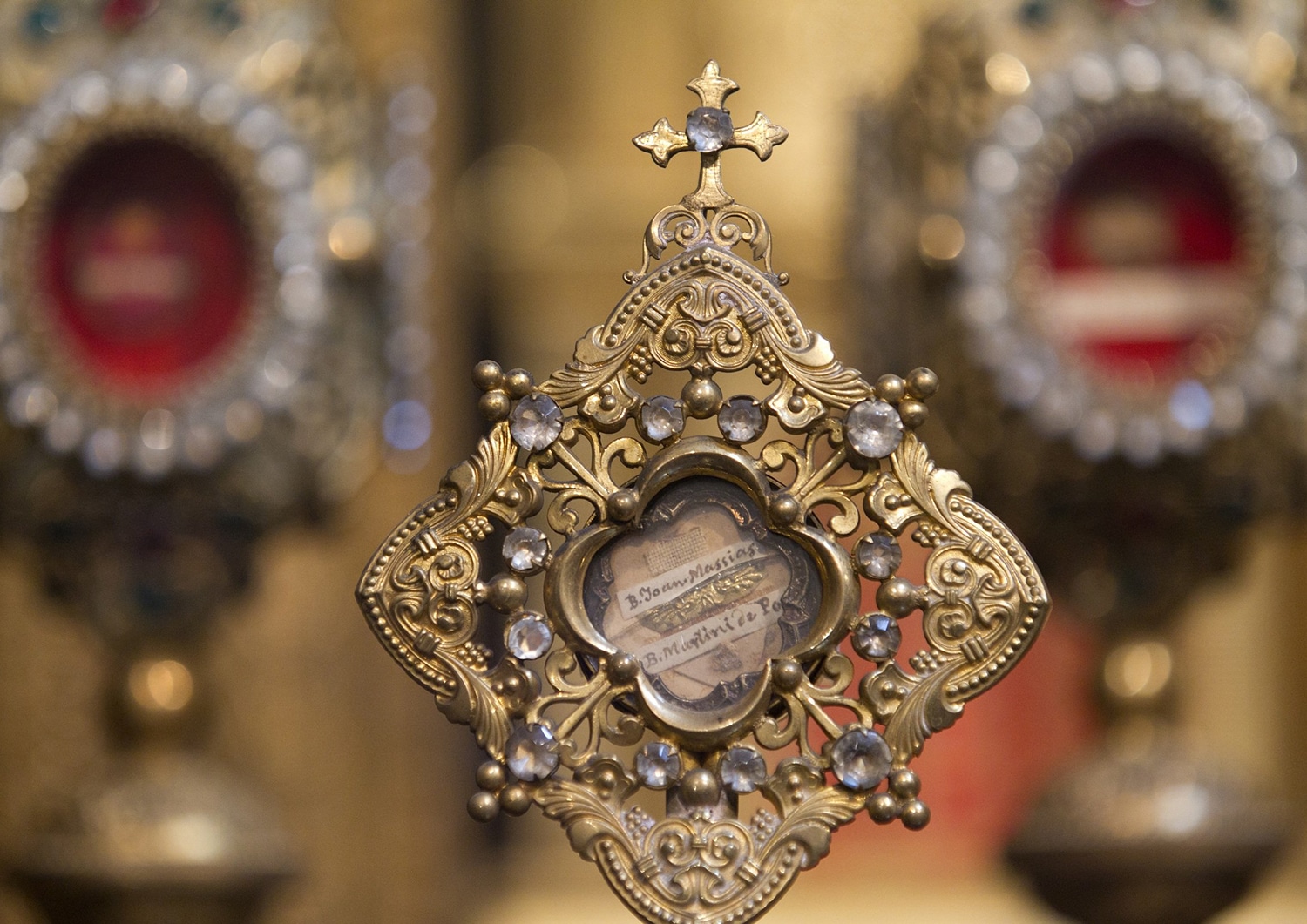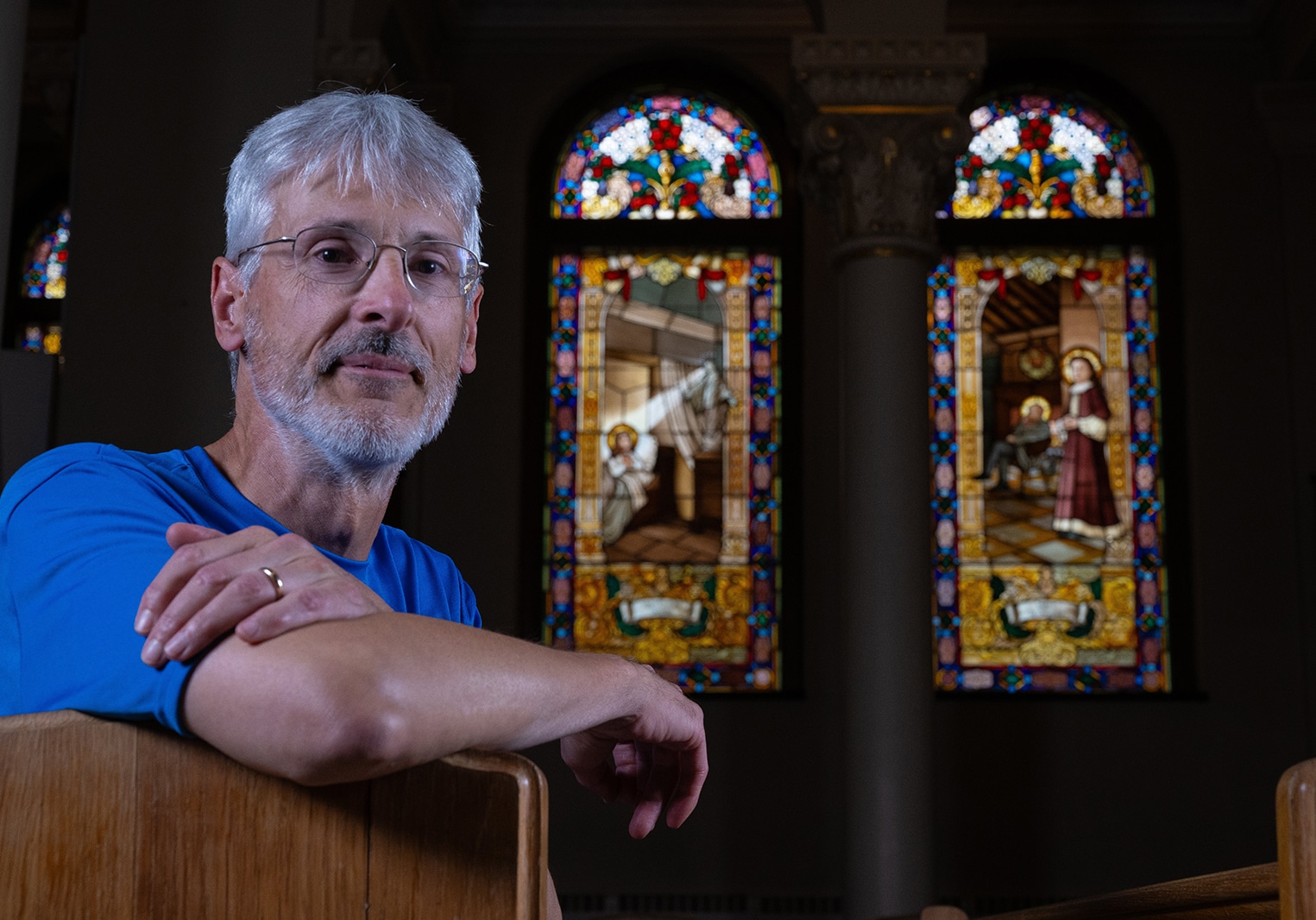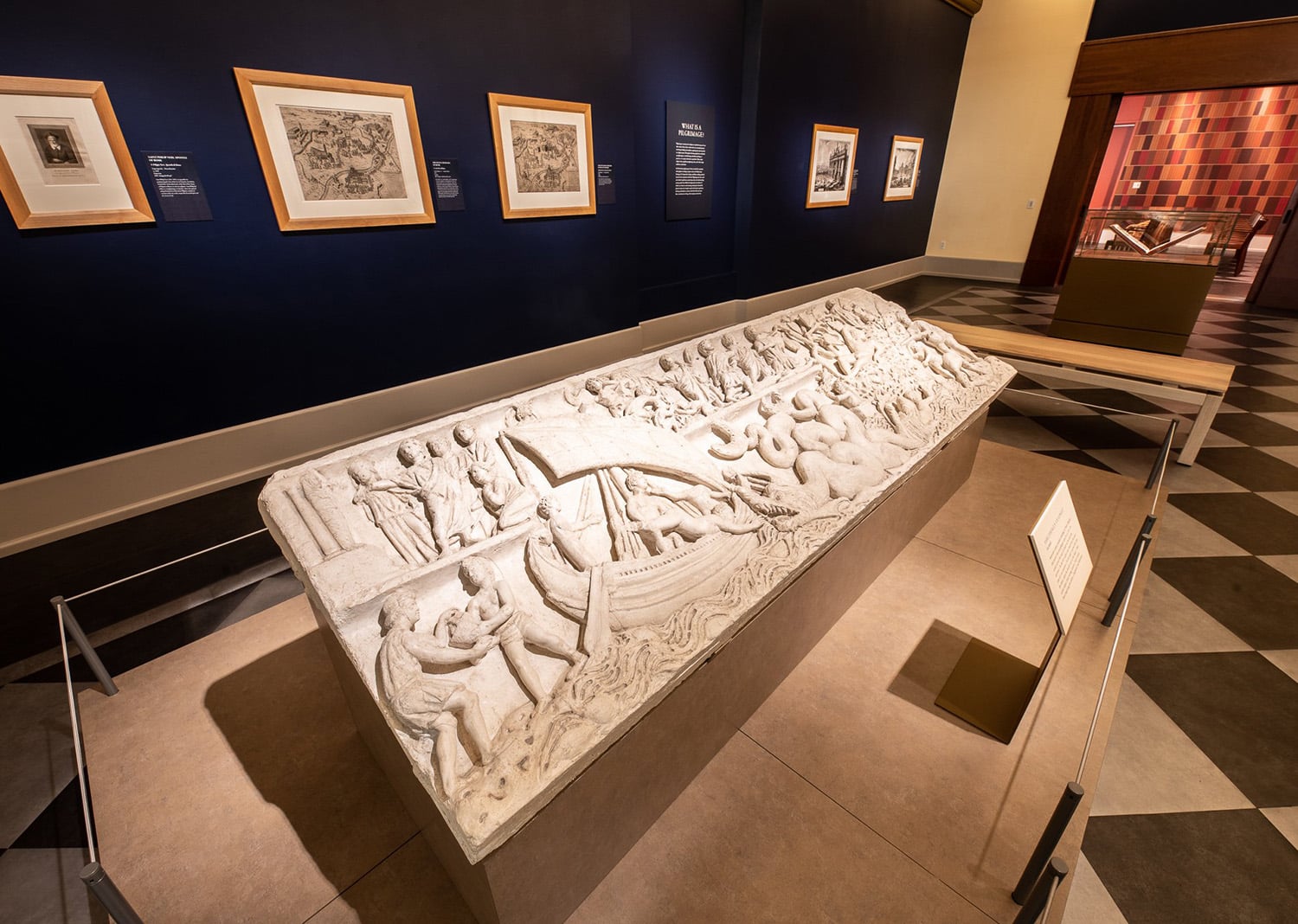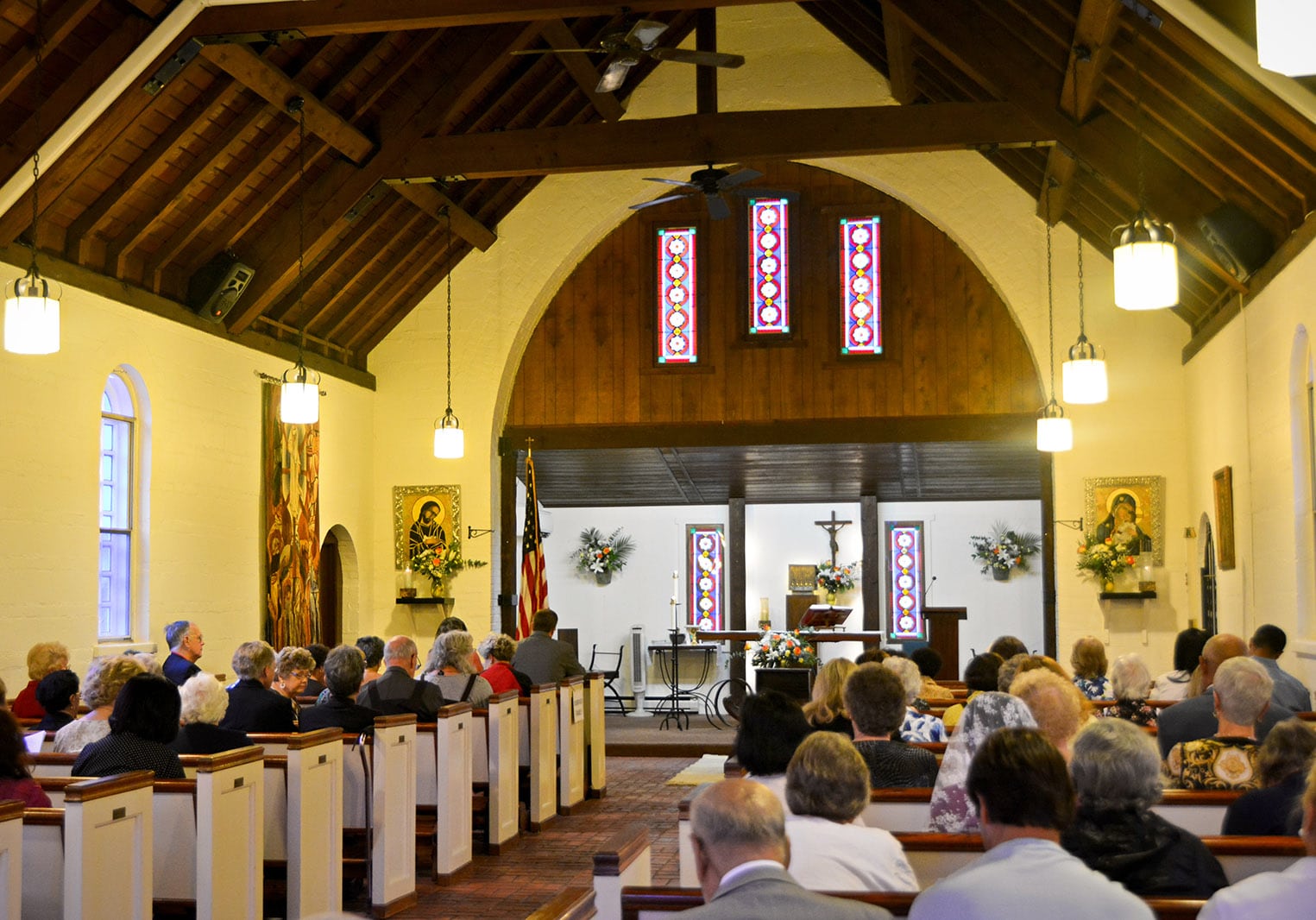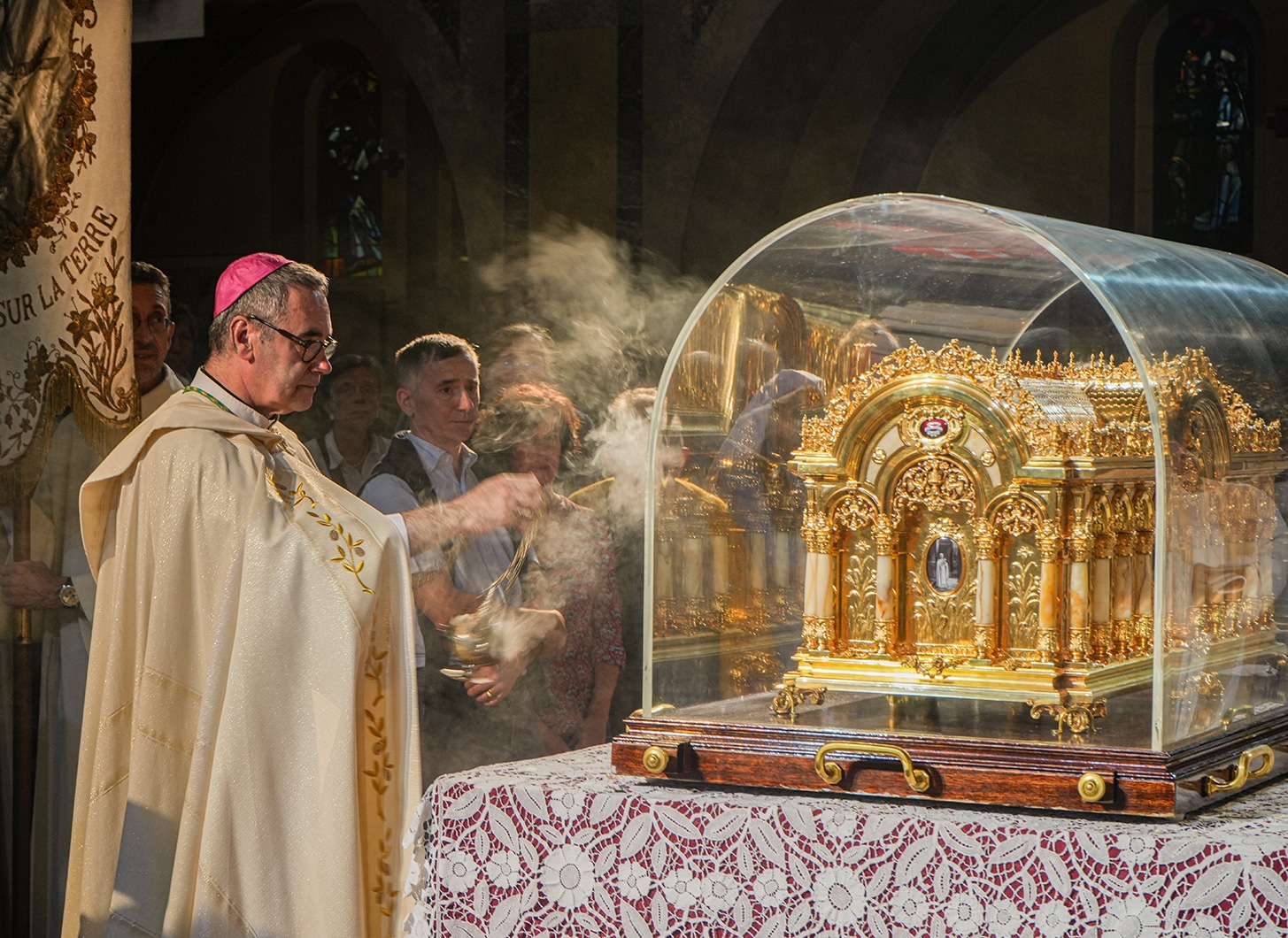(OSV News) — What is a saint’s relic? A relic can be one of three things: part of the body of a saint (a first-class relic); an item, such as a piece of clothing, used by a saint (a second-class relic); or an object touched to a first or second class relic (a third-class relic).
There are multiple examples in Scripture of the benefits of relics, such as when the bones of Elisha came in contact with a dead man and the man was raised to life (2 Kgs 13:21) or when the Christians of Ephesus used handkerchiefs and cloths touched to the person of St. Paul and they became conduits of grace to heal the sick (Acts 19:12).
While the healings came from God, the relics were his chosen means through which he acted. The fact that God chooses to use relics to work healing and miracles tells us that he wants to draw our attention to the saints as “models and intercessors” (Catechism of the Catholic Church, No. 828).
US churches home to relics
Several sites in the United States are home to vast collections of relics. The Maria Stein Shrine of the Holy Relics in Maria Stein, Ohio, is home to over 1,100 relics in 970 reliquaries representing 900 saints. It is one of the largest collections of its kind in the world. It is an active collection, as the shrine regularly makes requests for new relics from the Vatican. It is located in the Diocese of Cincinnati.
The shrine was founded in 1875, when Father J.M. Gartner entrusted his collection of relics to the Sisters of the Precious Blood. The site includes two chapels built more than a century ago, and is manned by a small staff and many volunteers. One of the chapels holds many of the relics, and bears the inscription over its entryway in English and German: “Enter devoutly, O pilgrim, for no place is holier than this in the new continent.”
As many as 400 people visit each month, including school groups, pilgrimages and tours. A variety of programs are offered to introduce visitors to the lives of the saints.
Classification of relics
To be included in the collection, relics must be first class (although a few are second class), sealed and authenticated. There are three major relic categories at the shrine.
The first is the earliest saints, including relics of the apostles, St. Stephen (the first martyr) and the relatives of Jesus.
The second are more recent saints, such as Padre Pio, the Fatima children and St. Damien of Molokai.
The third grouping includes well-known saints on the liturgical calendar, including St. Aloysius Gonzaga, St. Teresa of Avila, St. Anthony of Padua and St. Anne, the mother of Mary.
Additionally, there are relics of many popes, including St. John Paul II and St. Pius X. There are relics related to Christ, such as three pieces of the true cross. And there are remains of saints martyred in ancient Rome.
Among the shrine’s more notable relics are the complete remains of St. Victoria, a third-century martyr, originally enshrined in the catacombs in Rome. The body is not incorrupt, but covered in wax and clothed. The body is encased in glass, so visitors can come up and take a close look.
The shrine is also home to the nearly complete remains of St. Concordia, another third-century martyr.
St. Anthony’s Chapel in Pittsburgh
St. Anthony’s Chapel in Pittsburgh boasts an even larger collection of 5,000 relics. The chapel was originally built in two phases by Father Suitbert Mollinger in 1880 and 1892, who used his own family’s money to build the structure and begin collecting relics in Europe. Father Mollinger died in 1892, two days after the opening of the second section of the chapel.
Today, it is part of Most Holy Name of Jesus Parish in the Diocese of Pittsburgh. The archway at the entry of the chapel bears the inscription in Latin: “The bodies of the saints rest here in peace.”
This shrine draws as many as 200 visitors weekly. Special events, such as the feast day of its namesake, St. Anthony of Padua, draw even larger crowds. On Tuesdays, those attending Mass are blessed with a relic of St. Anthony, said Deacon Greg Jelinek, who serves at the parish.
The goodness of the body
“Our Catholic tradition is rooted in the holiness and goodness of the body, which extends to the remains of the saints,” said Deacon Jelinek. “They achieved great holiness in their lives, and it doesn’t cease with their death.”
The collection is random, he said, containing mostly first-class relics. Notable relics include those of St. Demetrius, a fourth-century martyr, whose bones have been carefully wrapped in silk. The skull of St. Macarius of Egypt, a fourth-century monk, is kept behind the altar. Relics of St. Anthony of Padua include one of his teeth. There are also remains of 20th-century saints, such as Padre Pio and St. Maria Goretti.
There are many relics related to Christ’s passion and death, including 14 pieces of the true cross, rocks from the garden of Gethsemane and the column on which Christ was scourged, pieces of the reed and sponge with which he was given a drink of sour wine and a thorn from Jesus’ crown of thorns.
For Deacon Jelinek, the relics are a “physical link which binds Christians from across the centuries.” He said, “When I’m in the chapel, I feel I’m in the physical presence of a great and glorious communion of saints.”
St. John Cantius Church in Chicago is another historic church that is home to about 1,800 relics. The relics were donated to the church from a variety of sources, but mostly from priests. Most of the relics are secured in a vault, with a small portion on public display.
A portion of the collection includes relics of the saints from the Lenten Station Churches of Rome. A custom that dates back to the fourth century, pilgrims to Rome could journey to Rome and visit churches honoring various saints. The bishop of Rome, the pope, would come celebrate Mass for them in the churches. The practice fell out of use when the papacy temporarily moved to Avignon, France in 1309, but it was revived by Popes Leo XIII and St. John XXIII.

